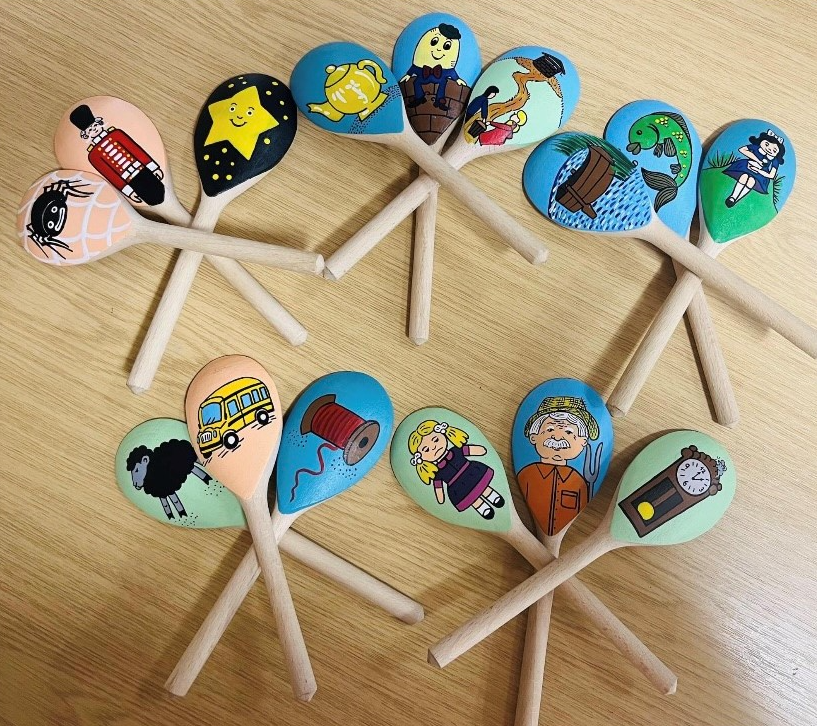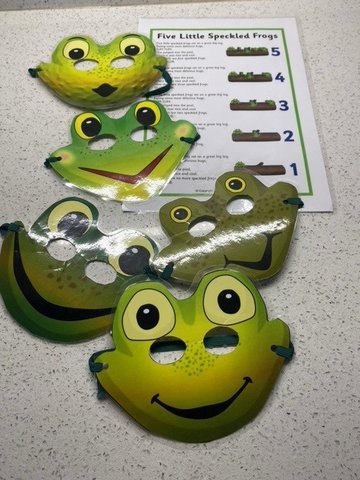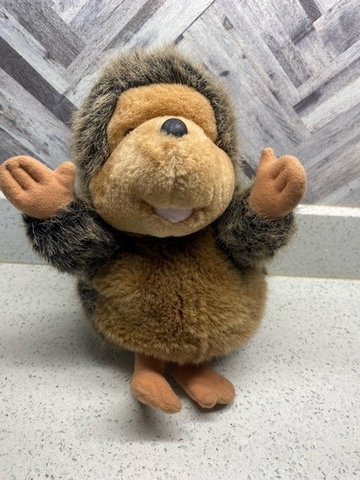Six years ago, Janice started volunteering at her local community library and now leads a weekly story time session for 25-30 preschool children. It was through this session that she learnt about the National Literacy Trust, as a local member of the team attended and said she’d make a brilliant Literacy Champion. We spoke to Janice about how she found the opportunity to lead a story time and her top tips for a successful session.
How did you find your story time session?
When I retired, I decided to become a volunteer at my local community library. It wasn't my intention to do a story time, but I soon realised there was demand for one. The library ran a story time group in the afternoon, but lots of people preferred morning sessions so they could put the toddlers down for a nap after lunch. So, I started to do one in the morning. We only had a few parents and children at the beginning but then, with word of mouth, we began to get more!
I’d recommend looking into opportunities at your local libraries. If they don’t have an opportunity, they might be able to put you in touch with somebody who's doing a story time somewhere else. This could be a room in a community centre like ours that’s manned by volunteers or a less formal setting, such as a local coffee shop or soft play area.
How do you start your story time session?
I’ve now been running the story time for six years and like to start the sessions in the same way. I get all the children seated on the floor on a blanket and I encourage the parents and carers to sit on the floor if they’re able to. If a child is on a chair, they tend to spend more time climbing on and off them!
Once the children are settled and comfortable, I start the session with a song or rhyme. I’ve got wooden spoons with little pictures painted on them that link to a nursery rhyme. The children can come up, choose a spoon, show it to their friends and then we all sing the nursery rhyme together. After we've used the spoons a few times, they begin to look for their favourite nursery rhyme. It’s amazing for their literacy skills as they see the picture and associate it with the words!
If I’ve got the time, I like to do something special for occasions such as Halloween. This year I made pumpkin masks, and we sang a pumpkin song. I find these extra things encourage the children to get more involved.

How do you tell the stories?
I make sure I’m sitting so that all the children can see me and I can make eye contact with them. Reading a story to the children can be quite daunting when you’re just beginning, but even if you feel silly when using different voices or making funny faces, the children never think so. They always join in with making a funny noise or doing different movements. You soon grow in confidence after a while and realise the more you immerse yourself in the story, the better it is for the children.
As my confidence grew, I began to make the stories more interactive. I look in charity shops and pick up resources such as a hand puppet or a figurine. I’ll often use these figures to help tell the story, introducing them to the group, interacting with them myself and pretending to listen to what they’re saying! This makes the story telling more accessible and exciting for the children. If I have some time, I like to print off easy templates of figures that regularly come up in books. I laminate these and put some magnet tape on the back, so if the story is about a witch, a child can come up to the front, find the witch and stick it to the magnet board.
How do you choose which books to use for your story time?
I always start simple and make sure I’ve read the book first. I've been caught off guard before by taking a book off the shelf that I haven’t read or letting a child choose a book and it turns out that the pictures aren’t clear, or the vocabulary is too difficult for the group. If I’ve read the book before, I can explain any vocabulary before we begin.
I’ve compiled a list of good, easy and well received titles such as We’re Going on a Bear Hunt, The Gruffalo, Room on the Broom and Owl Babies. The children always love books that they've heard before. Again and again, they always say, and then they can join in. Libraries often let you borrow big copies of familiar texts which are brilliant for seeing the pictures.
Any final tips for someone thinking of becoming a Literary Champion?
Be brave, send an e-mail to your local library and see if you get any answers! Settings are always looking for volunteers, so it’s good if you're going in with a particular skill or a willingness to do something that might not already be happening.
Inspired by Janice? Register your interest to become a Literacy Champion!


